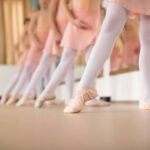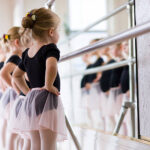“…whatever is true, whatever is honorable, whatever is just, whatever is pure, whatever is lovely, whatever is commendable, if there is any excellence, if there is anything worthy of praise, think about these things.” (Phillipians 4:8)
Summary of Classical Ballet
Classical ballet serves multiple purposes, blending athleticism, artistry, and storytelling into a graceful and disciplined form of expression. It serves as a multifaceted art form that enriches both performers and audiences alike, offering a platform for creativity, expression, and cultural exchange. Here are some key purposes:
- Artistic Expression: At its core, classical ballet is a form of artistic expression that allows dancers to convey emotions, narratives, and themes through movement, music, and performance. Dancers use their bodies to communicate stories, characters, and emotions, often without words, relying on the universal language of movement.
- Physical Discipline and Technique: Classical ballet demands rigorous training and discipline. Dancers develop strength, flexibility, balance, and coordination. The precise technique required in ballet serves not only aesthetic purposes but also helps prevent injuries and allows dancers to execute movements with grace and control.
- Cultural Heritage and Tradition: Classical ballet has a rich history and tradition that spans centuries. It has evolved from the courts of Renaissance Italy to the grand theaters of Russia and beyond. Preserving classical ballet helps maintain a connection to this cultural heritage and allows audiences to appreciate the beauty and sophistication of this art form.
- Entertainment and Audience Engagement: Classical ballet productions often serve as entertainment. Ballet performances
 provide a form of escapism, transporting audiences to fantastical worlds, historical settings, or emotional landscapes.
provide a form of escapism, transporting audiences to fantastical worlds, historical settings, or emotional landscapes.
St. Paul Fine Arts Academy Ballet Class
Ballet schools play a crucial role in training the next generation of dancers. They provide aspiring dancers with the skills, knowledge, and opportunities needed to pursue careers in ballet, or simply to give them the opportunity to develop their own artistic expression through discipline and dedication.
At St. Paul Fine Arts Academy, our goals are to introduce all our dancers to the beauty of classical ballet and all the benefits it includes. Our intention is to glorify God through pure, beautiful, and good technique. Our intention is also to teach children the absolute joy of working diligently on a craft for the purpose of artistry and the joy of using the bodies God gave us to move with music.
Dress Code
We encourage dancers to wear comfortable clothing that lets them move freely. There is no need for the standard leotard and tights dress code that is necessary for more advanced dancers. Ballet shoes are allowed – you can talk to the instructors if you need suggestions for the kinds and place you might look to purchase them OR students can come in bare feet (clean of course) – socks will be too slippery!
Movement/Technique
Since we plan to start with young children (around ages 4-6 years old) the classes will focus less on discipline and strength training and will instead focus on introducing musicality and creative movement. Our intention is to teach the children the joy of storytelling and artistic expression through bodily movements that match or enhance the accompanying music. Again, if we introduce more advanced classes in the future, the classes will revolve almost
entirely on the development of classical ballet technique.
Since the ballet classes are rooted in classical ballet with the intention of preparing the children for more classical technique as they grow older, we intend to play classical ballet music during their class. It is also common to include more modern music for a small portion of class so that the children have the opportunity to hear more familiar sounds and just have fun with movement.
Parameters
- Ages 4-6
- Term length – 12 weeks
- Class length – 45 minutes
- Maximum students 12
Instructors – Sydney Glynn, Emma Weide
Tuition/Fees:
- By semester: $270 (at time of registration); OR
- Three monthly installments: $90 (at time of registration, 30 & 60 Days after) – TOTAL = $270
- St. Paul members only: If you have a concern about the fees (multiple registration, financial hardship, etc.) please contact Jonathan Mueller directly to discuss your situation.
